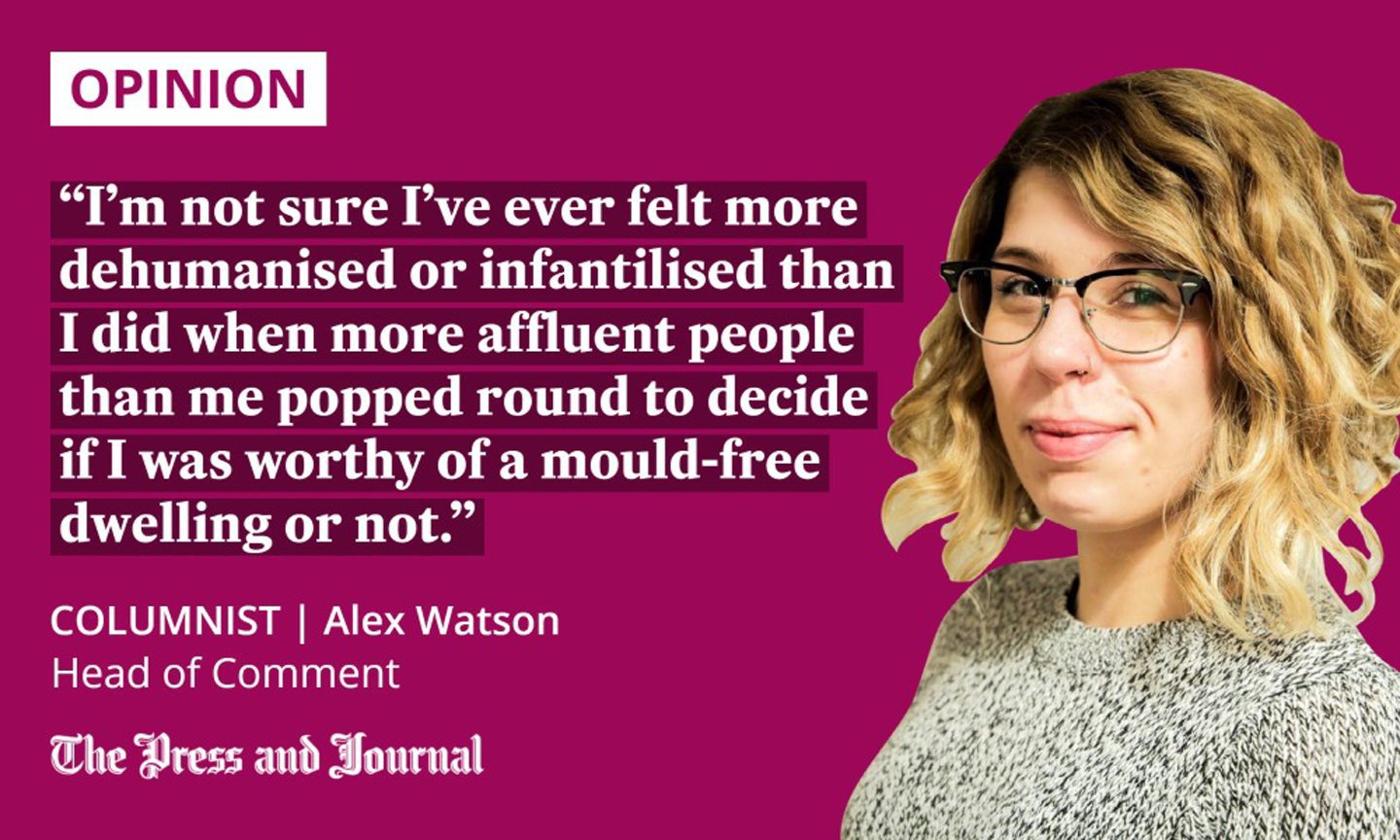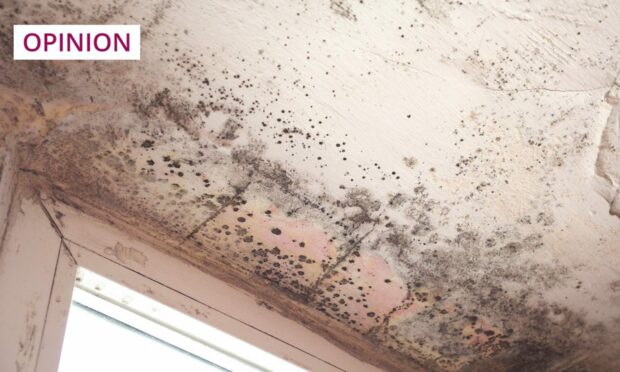Landlords and housing companies have a responsibility to make their properties safe to live in. Too often, they try to blame and shame tenants instead of acting appropriately, writes Alex Watson.
The sheer indignity of some things I’ve seen and done as a tenant (or prospective one) would have been funny if they were plotlines in a sitcom, not happening in real life.
Like the time I literally raced other viewers from a flat to the letting agent’s office, a mile away – first one to slap their huge deposit (plus “admin fee”) on the desk got to live there. A highlight for the imaginary scriptwriters, but a serious low point for real-life me.
When I learned that the Housing Ombudsman’s October 2021 report into damp and mould in social housing was titled “It’s not lifestyle”, another renting humiliation I’ve tried to forget came back to me.

Mould appeared on the bathroom ceiling; just a wee bit in the corner there, at first. We scrubbed, but it made no difference. It started to spread. A while later, we spotted some in the bedroom, above the window. And, then, in the spare room, in the same spot.
It was all on the north side of the flat, where weather-worn guttering meant rainwater ran down the exterior of the building.
“Open the windows more,” the letting agent advised. So, we did, even in freezing weather, when the single-glazing meant it was already fridgelike indoors. It didn’t change anything.
“Stop hanging your washing up to dry in the flat. Stop taking long showers.”
They emailed a sheet of helpful tips for reducing the chances of mould, which I’m surprised didn’t include the instruction to cut down on emitting pesky, moisture-filled breath where possible.
A new level of degradation
A lot of back and forth later, there was a summit. Someone from the letting agency visited the flat to take a look, joined by the property owner herself (normally a silent player), and her middle-aged daughter – a complete stranger to me. Why she had to come into my house, stand in my bedroom, side-eye my furniture, I’ll never know.
I had always found flat inspections demeaning, but this was a new level of degradation.
The Housing Ombudsman's report into damp and mould in social housing from October last year was titled 'It's not lifestyle'. Blaming tenants for having baths and drying clothes should be “banished from the vernacular of landlords when discussing damp and mould”, it said pic.twitter.com/dxlCgxbLd3
— Peter Apps (@PeteApps) November 16, 2022
Whether they meant to or not, those three women made me feel small, dirty and ashamed for a health hazard that simply wasn’t my fault.
The landlady’s daughter in particular didn’t want to let me off easy, adamant that the disgusting way I was living had brought on this just plague of ceiling spores. I had, after all, continued to take showers and do washing like the reprobate I am.
When we moved elsewhere, I was finally able to stop worrying that creeping mould was quietly killing us
Perhaps she thought I was trying to swindle her nice old mum, who, overall, I ended up paying around £35,000 to in rent, in exchange for the privilege of living in that mouldy mouse haven.
Some landlords seem unable to think of tenants as human beings
The windows were replaced, in the end, and the rooms repainted. But the mould never really went away, because – I’m quite convinced – its real root cause would have been much more expensive to deal with.
I rolled over and continued to pay rent. When we moved elsewhere, I was finally able to stop worrying that creeping mould was quietly killing us.
A paranoid overreaction, you might think. Frankly, no.
In 2020, two-year-old Awaab Ishak died as a result of exposure to mould in his home in Rochdale, Greater Manchester. The alarm was raised by various people on various occasions, before respiratory and cardiac arrest killed the toddler in hospital. The housing company responsible for making the flat safe to live in did nothing.
I’m not sure I’ve ever felt more dehumanised or infantilised than I did when more affluent people than me popped round to decide if I was worthy of a mould-free dwelling or not.
Though the law now gives renters more protection around deposits and eviction, many letting agents and landlords remain greedy and lazy, apparently unable to independently think of their tenants as human beings.
If you trick yourself into believing that the heartbroken Ishak family are the ones to blame for their baby son’s death, you may have been out of the renting game for too long. Don’t worry – I can email you a sheet of helpful tips for relearning empathy.
Alex Watson is Head of Comment for The Press & Journal, and still wants that stupid admin fee back


Conversation